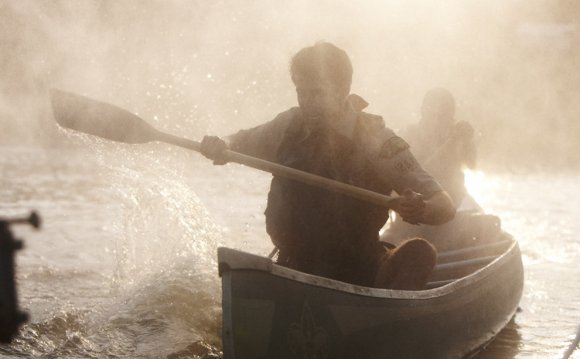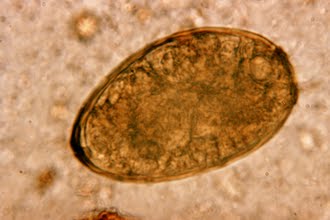
From its beginnings, the Boy Scouts of America had a strong foundation of woodcraft, nature study, and conservation. Many activities in Scouting come from activities of Native Americans. Many of the principles that Scouts uphold come from the conservation ethics of early founders, in particular Ernest Thompson Seton and Daniel Carter Beard. The BSA has taught more than 110 million young environmentalists throughout its history. Currently, with nearly 5 million members, the BSA continues to train the youth of America in principles of conservation and environmental science.
Environmental Science is one of the required merit badges for the World Conservation Award for Boy Scouts, and one of the required merit badges for the William T. Hornaday awards for Boy Scouts and Varsity Scouts.
- Make a timeline of the history of environmental science in America. Identify the contribution made by the Boy Scouts of America to environmental science. Include dates, names of people or organizations, and important events.
- Define the following terms: population, community, ecosystem, biosphere, symbiosis, niche, habitat, conservation, threatened species, endangered species, extinction, pollution prevention, brownfield, ozone, watershed, airshed, nonpoint source, hybrid vehicle, fuel cell.
- Do ONE activity in EACH of the following categories (using the activities in this {the merit badge} pamphlet as the basis for planning and carrying out your projects): a. Ecology 1. Conduct an experiment to find out how living things respond to changes in their environments. Discuss your observations with your counselor. 2. Conduct an experiment illustrating the greenhouse effect. Keep a journal of your data and observations. Discuss your conclusions with your counselor. 3. Discuss what is an ecosystem. Tell how it is maintained in nature and how it survives. b. Air Pollution 1. Perform an experiment to test for particulates that contribute to air pollution. Discuss your findings with your counselor. 2. Record the trips taken, mileage, and fuel consumption of a family car for seven days, and calculate how many miles per gallon the car gets. Determine whether any trips could have been combined ("chained") rather than taken out and back. Using the idea of trip chaining, determine how many miles and gallons of gas could have been saved in those seven days. 3. Explain what is acid rain. In your explanation, tell how it affects plants and the environment and the steps society can take to help reduce its effects. c. Water Pollution 1. Conduct an experiment to show how living things react to thermal pollution. Discuss your observations with your counselor. 2. Conduct an experiment to identify the methods that could be used to mediate (reduce) the effects of an oil spill on waterfowl. Discuss your results with your counselor. 3. Describe the impact of a waterborne pollutant on an aquatic community. Write a 100-word report on how that pollutant affected aquatic life, what the effect was, and whether the effect is linked to biomagnification. d. Land Pollution 1. Conduct an experiment to illustrate soil erosion by water. Take photographs or make a drawing of the soil before and after your experiment, and make a poster showing your results. Present your poster to your patrol or troop. 2. Perform an experiment to determine the effect of an oil spill on land. Discuss your conclusions with your counselor. 3. Photograph an area affected by erosion. Share your photographs with your counselor and discuss why the area has eroded and what might be done to help alleviate the erosion. e. Endangered Species 1. Do research on one endangered species found in your state. Find out what its natural habitat is, why it is endangered, what is being done to preserve it, and how many individual organisms are left in the wild. Prepare a 100-word report about the organism, including a drawing. Present your report to your patrol or troop. 2. Do research on one species that was endangered or threatened but which has now recovered. Find out how the organism recovered, and what its new status is. Write a 100-word report on the species and discuss it with your counselor. 3. With your parent's and counselor's approval, work with a natural resource professional to identify two projects that have been approved to improve the habitat for a threatened or endangered species in your area. Visit the site of one of these projects and report on what you saw. f. Pollution Prevention, Resource Recovery, and Conservation 1. Look around your home and determine 10 ways your family can help reduce pollution. Practice at least two of these methods for seven days and discuss with your counselor what you have learned. 2. Determine 10 ways to conserve resources or use resources more efficiently in your home, at school, or at camp. Practice at least two of these methods for seven days and discuss with your counselor what you have learned. 3. Perform an experiment on packaging materials to find out which ones are biodegradable. Discuss your conclusions with your counselor. f. Pollination 1. Using photographs or illustrations, point out the differences between a drone and a worker bee. Discuss the stages of bee development (eggs, larvae, pupae). Explain the pollination process, and what propolis is and how it is used by honey bees. Tell how bees make honey and beeswax, and how both are harvested. Explain the part played in the life of the hive by the queen, the drones, and the workers. 2. Present to your counselor a one-page report on how and why honey bees are used in pollinating food crops. In your report, discuss the problems faced by the bee population today, and the impact to humanity if there were no pollinators. Share your report with your troop or patrol, your class at school, or another group approved by your counselor. 3. Hive a swarm OR divide at least one colony of honey bees. Explain how a hive is constructed.
- Choose two outdoor study areas that are very different from one another (e.g., hilltop vs. bottom of a hill; field vs. forest; swamp vs. dry land). For BOTH study areas, do ONE of the following: a. Mark off a plot of...
RELATED VIDEO












